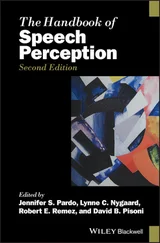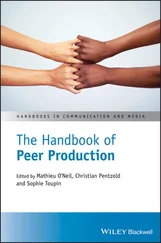In the final chapter of the book, we are extremely pleased to include a unique and personal historical perspective on the genesis of a central research area related to solitude. In this chapter, Kenneth Rubin ( Chapter 29) describes the development of his innovative and highly influential research program on social withdrawal during childhood. This seminal work began in the 1970s with the novel notion that if children and adolescent benefit from social interactions, relationships, and group involvement, youth who fail to interact with peers might struggle considerably across numerous domains. This initial idea proved to be correct, and as a result, led to the creation of a brand‐new area of research, childhood social withdrawal , of which Rubin is widely regarded as a founder. The three editors of this handbook were all fortunate to work with Ken as his graduate students, an experience for which we are eternally grateful. Thus, it is fitting that we conclude this handbook with his deeply personal account of his research career as it not only influenced our research careers but also the research careers of many of the authors in this book and those who will be reading this handbook as graduate students or senior academics.
Concluding Thoughts: Getting Solitude “Just Right”
As we have seen, we still have much to learn about the nature of the complex links between solitude and well‐being. Moving forward, we would assert that we should aim for balance in this discussion. That is, solitude is not a one size fit all phenomenon – and as a result – we should be careful how we advocate its implementation. As an example of how to think about the implementation of such a complex construct, Coplan, Zelenski, and Bowker (2018) likened the effects of solitude on well‐being to spending time in direct sunlight . In this regard, experiencing at least some sunlight on a regular basis is probably good for all of us (e.g., source of vitamin D), but also particularly important for some of us (e.g., those with Seasonal Affective Disorder). However, the optimal time that we spend in the sun differs across individuals (e.g., some people get sunburned more easily than others), and chronic overexposure puts all of us at increased risk for negative consequences (e.g., melanoma).
Importantly, this suggests that there are potentially negative implications for both getting too much solitude – but also – and importantly – for not getting enough solitude (Coplan, Hipson et al., 2019). Ultimately, it appears that our experiences of solitude may be subject to the Goldilocks Hypothesis . As it applied to bowls of chairs, porridge, and beds, the Goldilocks Hypothesis asserts that there is an optimal amount (“just right”) of exposure to certain circumstances or experiences for positive effects to occur that is specific to each individual (e.g., Coplan et al., 2019; Kagan, 1990; Kidd et al., 2014; Przybylski & Weinstein, 2017). Accordingly, the chapters in this handbook have helped shed light on the biological, environmental (e.g., family, peers), and contextual (e.g., culture) factors that contribute to what determines the amount and type of solitude that is “just right” for any individual.
Indeed, we would like to thank the contributing authors for their thought‐provoking and insightful chapters. We hope that the content of the volume will be of benefit to readers who are trying to utilize the potential benefits in their own lives. Also, we are hopeful that the chapters will further stimulate research related to our understanding of the causes and consequences of solitude.
1 American Psychiatric Association. (1952). Diagnostic and Statistical Manual of Mental Disorders (1st edition). Washington, DC.
2 Asendorpf, J.B. (1990). Beyond social withdrawal: shyness, unsociability, and peer avoidance. Human Development, 33, 250–259.
3 Barash, D.P. (1977). Sociobiology and Behavior. New York: Elsevier.
4 Baumeister, R.F. & Leary, M.R. (1995). The need to belong: desire for interpersonal attachments as a fundamental human motivation. Psychological Bulletin, 117, 497–529.
5 Berman, M.G., Jonides, J., & Kaplan, S. (2008). The cognitive benefits of interacting with nature. Psychological Science, 19, 1207–1212.
6 Berry, M., Carbaugh, D., & Nurmikari‐Berry, M. (2004). Communicating Finnish quietude: a pedagogical process for discovering implicit cultural meanings in languages. Language and Intercultural Communication, 4, 209–228.
7 Blanchard, J.J., Gangestad, S.W., Brown, S.A., & Horan, W.P. (2000). Hedonic capacity and schizotypy revisited: a taxometric analysis of social anhedonia. Journal of Abnormal Psychology, 109, 87–95.
8 Bowker, J.C., Ooi, L.L., Coplan, R.J., & Etkin, R.G. (2020). When is it okay to be alone? Gender differences in normative beliefs about social withdrawal. Sex Roles, 82, 482–492.
9 Bowker, J.C., Rubin, K.H., & Coplan, R.J. (2016). Social withdrawal. In R.J.R. Levesque (Ed.), Encyclopedia of Adolescence (2nd ed., pp. 1–14). New York: Springer.
10 Brody, N. (2018). Opting out of social media: online communication attitudes mediate the relationship between personality factors and Facebook non‐use. Southern Communication Journal, 83(2), 75–88. https://doi.org/10.1080/1041794X.2017.1413415
11 Brown, L.H., Silvia, P.J., Myin‐Germeys, I., & Kwapil, T.R. (2007). When the need to belong goes wrong: the expression of social anhedonia and social anxiety in daily life. Psychological Science, 18, 778–782.
12 Burger, J.M. (1995). Individual differences in preference for solitude. Journal of Research in Personality, 29, 85–108.
13 Buttrick, N., Choi, H., Wilson, T.D., Oishi, S., Boker, S.M., Gilbert, D.T., Alper, S., Aveyard, M., Cheong, W., Čolić, M.V., Dalgar, I., Doğulu, C., Karabati, S., Kim, E., Knežević, G., Komiya, A., Laclé, C.O., Ambrosio Lage, C., Lazarević, L.B., … Wilks, D.C. (2019). Cross‐cultural consistency and relativity in the enjoyment of thinking versus doing. Journal of Personality and Social Psychology, 117, e71–e83.
14 Cacioppo, J.T. & Patrick, B. (2008). Loneliness: Human Nature and the Need for Social Connection. New York: W.W. Norton & Company.
15 Chua, S.N. & Koestner, R. (2008). A self‐determination theory perspective on the role of autonomy in solitary behavior. The Journal of Social Psychology, 148, 645–648.
16 Chen, X. (2019). Culture and shyness in childhood and adolescence. New Ideas in Psychology, 53, 58–66.
17 Clauss, J.A. & Blackford, J.U. (2012). Behavioral inhibition and risk for developing social anxiety disorder: a meta‐analytic study. Journal of the American Academy of Child & Adolescent Psychiatry, 51, 1066–1075.
18 Coplan, R.J. & Bowker, J.C. (2014). The Handbook of Solitude: Psychological Perspectives on Social Isolation, Social Withdrawal, and Being Alone. New York: Wiley‐Blackwell.
19 Coplan, R.J. & Bowker, J. (2017). Should we be left alone? Psychological perspectives on the implications of seeking solitude. In I. Bergmann & S. Hippler (Eds.), Cultures of Solitude: Loneliness–Limitation–Liberation (pp. 287–302). Bern: Peter Lang.
20 Coplan, R.J., Hipson, W.E., Archbell, K., Ooi, L.L., Baldwin, D., & Bowker, J.C. (2019). Seeking more solitude: conceptualization, assessment, and implications of aloneliness. Personality and Individual Differences, 148, 17–26.
21 Coplan, R.J., Ooi, L.L., & Baldwin, D. (2019). Does it matter when we want to be alone? Exploring developmental timing effects in the implications of unsociability. New Ideas in Psychology, 53, 47–57.
22 Coplan, R.J., Ooi, L.L., & Nocita, G. (2015). When one is company and two is a crowd: why some children prefer solitude. Child Development Perspectives, 9, 133–137.
Читать дальше




![О Генри - Справочник Гименея [The Handbook of Hymen]](/books/407356/o-genri-spravochnik-gimeneya-the-handbook-of-hymen-thumb.webp)







